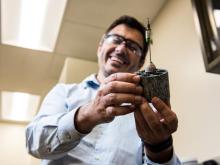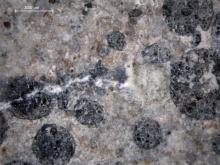US researchers say they have developed a type of 'self-healing' cement that would enable an 87% reduction in cracks during drilling applications.
The government-run Pacific Northwest National Laboratory (PNNL) claims that its self-healing cement can outperform conventional concrete, offering a potentially pollution-preventing technology for the growing geothermal industry.
The new cement variant uses a flexible polymer ingredient to repair fractured surfaces and fill cracks, which the Richland, Washington-based PNNL says minimises mechanical failure risks and offers a sustainable energy source.
The cement industry earns more than US$37bn annually, but the researchers say that cracking cement costs an average of US$12bn a year to repair infrastructure alone. They claim that the polymer-cement combination could amount to US$3.4bn a year in savings for infrastructure like dams, nuclear waste facilities and skyscrapers - which could mean fewer road closures and maintenance repairs that clog roads and create inconveniences for daily commutes.
The PNNL research team, which is led by chemist Carlos Fernandez, collaborated with Simerjeet Gill of Brookhaven National Laboratory on the project.
Cement used in geothermal wells is known to crack under pressure and in high-temperature environments associated with drilling for geothermal energy. The researchers say the objective of their study was to see how its self-healing cement would hold up when tested against conventional cement in these extreme heat conditions. Through a variety of tests, performed at PNNL and BNL’s National Synchrotron Light Source II, the team found that the self-healing cement technology could eliminate the need to remove, repair and replace cracked cement wells.
PNNL researchers tested their self-healing cement’s strength and reactions to mechanical stress and conducted analyses of surface area, chemical composition, and surface topography. They say the tests confirmed that the self-healing cement is a significant alternative to conventional cement because it is flexible and autonomously heals cracks.
The flexibility is attributed to chemically “soft” or flexible bonding between the atoms in the polymer and cement. This soft bonding allows large deformations that can be contained within the cement without breaking the bonds, according to computational modelling conducted by PNNL. The polymer is claimed to add 60 to 70% more elasticity to the cement when it is added, reducing fractures in the cement.
On their own, polymers are large, chain-like molecules that work to hold substances together and are naturally found in the human body. When added to cement, the PNNL researchers say that polymers add flexibility to brittle material and keep cracks from spreading quickly. The polymer detaches, migrates to the crack, and attaches back to fill the crack. There was a claimed 87% reduction in crack size when the polymer was added to the concrete.
Cement is the second largest consumable in the world behind water, and the researchers say that finding a way to make cement even more effective could be "a game changer" not only for the geothermal industry, but the construction industry overall.
“The idea in a few years would be to extend it to everything,” Fernandez said. “The sky’s the limit.”
Conventional cement costs around US$0.05 per pound, while the new polymer-cement is US$0.30-US$0.35 per pound, but Fernandez claims the self-healing cement could potentially extend the life of concrete-based structures by 30 to 50 years.
He added that the new form of cement would have benefits for a number of industries, including the oil sector, where high temperatures are a constant, and removing and replacing cracked concrete is time consuming and costly.
It could also be used at nuclear waste facilities and hydropower dams where cracks in the structures and mechanical failure could result in flooding or contamination. Costly annual and biannual inspections and repairs could decrease in number, Fernandez said. The flexible nature of the self-healing cement also allows it to withstand greater mechanical stress from natural disasters and extreme weather conditions such as earthquake tremors or high winds.
Fernandez added that the self-healing cement could resolve major concerns about the sealing of wellbores for oil, gas, and geothermal heat production. Leaks in wellbores cause contamination and limit the ability to provide clean energy alternatives. These leaks contaminate aquifers and surface waters.
He said that the new composite would enable 30 years of additional usage, meaning that less cement would go to landfills.
This article first appeared on our sister title Aggregates Business.






